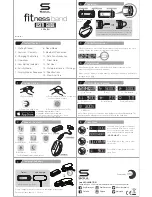
111
Sound Edit operating mode
Basic: Sound Basic
Re
fe
rence
Oscillator Count
Oscillators Count
Use this box to specify the number of oscillators (up to 24) the
Sound is based on.
The total amount of polyphony varies depending on the number
of oscillators used by the Sound (a maximum of 128 with only 1
oscillator per voice).
Note:
When editing the Grand Piano sound, keep in mind Oscilla-
tors 10~15 can only be heard when the Damper pedal is depressed.
Low priority
Use this parameter to decide if the highest-numbered oscillators
must be turned off when more polyphony voices are needed.
Keep in mind that, with a dense polyphony, missing oscillators
might not even be heard.
0
No oscillator will be turned off in any case.
1
The highest-numbered oscillator will be turned
off, if needed.
2
The two highest-numbered oscillators can be
turned off, one after the other, if needed.
[n]…24
The n-numbered oscillators (up to 24) can be
turned off, one after the other, if needed.
Transpose Range
Top/Bottom Key
Use these parameters to set a range for transposition. Inside this
range notes are transposed. Outside this range, they are not
transposed. This is useful to avoid RX Sounds being transposed
when transposing a Sound.
Note:
Set these (general) values so that all RX Noises assigned to
any Oscillator fall out of the Transpose Range. For example, if you
assigned an RX Noise to a G7 on OSC1, and an RX Noise to an A7
on OSC2, set the “Top Key” value no higher than F#7 (just below
the lowest RX Noise).
Voice Assign Mode
Poly/Mono
This is the polyphonic mode of the Sound.
Poly
The Sound will play polyphonically, allowing you
to play chords.
Mono
The Sound will play monophonically, producing
only one note at a time.
Single Trigger
This parameter is available when the selected mode is Poly.
On
When the same note is played repeatedly, the pre-
vious note will be silenced before the next note is
sounded, so that the notes do not overlap.
Off
When the same note is played repeatedly, the pre-
vious note will not be silenced before the next
note is sounded.
Legato
This parameter is only available when the selected mode is
Mono. It is the same found on the main page of the Sound mode.
See “Legato” on page 109 for information on this parameter.
Priority
This parameter is available when the selected mode is Mono. It
specifies which note will be given priority to play when two or
more notes are played simultaneously.
Low
Lowest note will take priority.
High
Highest note will take priority.
Last
Last note will take priority.
Hold
Use this parameter to keep the notes sustained even after releas-
ing the keys.
Legato as OSC Trigger
The parameters included in this section are to be considered
when a note is played ‘legato’, i.e., with no gap with the previous
note. These parameters are valid for the whole Sound (all oscilla-
tors).
Max Time
This delay allows notes to be considered Legato, even if there is a
small gap before them. This is useful to avoid some notes in a
chord are played Legato, and some others Staccato.
1…999 ms
Notes played with a small gap are still considered
Legato notes. A value of approx. 15 ms is usually
considered effective when playing chords.
Max Range
This is the range (in semitones) within the Legato is considered.
If you play a wider interval, the note is considered Staccato. This
is typical of some acoustic instruments, where legato is only pos-
sible within a small interval, but not on wider ones.
As an example, please try the Sound “Nylon Guitar DNC”, where
the Max Range is 5 semitones. Play legato with intervals smaller
than 5 semitones, and you will hear how smoother legato notes
will become. Play legato with wider intervals, and legato
smoothing will be lost.
1…127 st
Max range in semitones.
Summary of Contents for PA 600 QT
Page 1: ...Reference Guide ENGLISH OS Ver 1 0 1 E ...
Page 2: ......
Page 8: ...4 Table of Contents ...
Page 9: ......
Page 196: ...192 MIDI Playing another instrument with Pa600 ...
Page 197: ......
Page 327: ......
















































